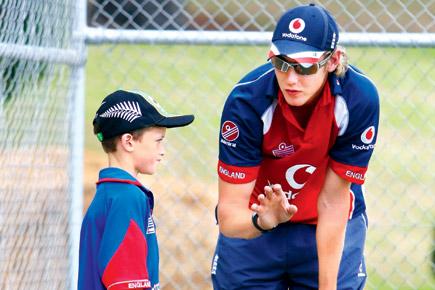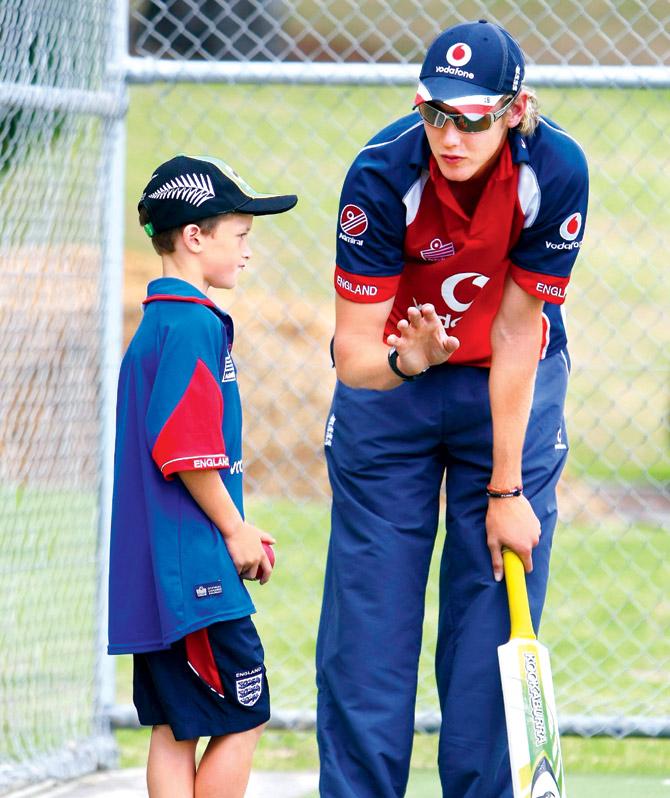Kids must find a good coach or avoid it at all costs and learn the game of cricket for yourself, writes Ian Chappell

England star Stuart Broad passes on some tips during a coaching clinic for children at Sacred Heart College in Auckland on February 16, 2008
Melbourne: It's now eight years since Misbah-ul-Haq's ill-conceived attempted scoop shot ballooned to short fine leg at the Wanderer's stadium and India was crowned inaugural World T20 champions.
England star Stuart Broad passes on some tips during a coaching clinic for children at Sacred Heart College in Auckland on February 16, 2008. Pic/Getty Images
Much has happened in cricket since that exciting five-run victory and the bulk of it revolves around the evolution of T20. Leagues have sprung up like daisies in summer, with the IPL being the most affluent and gaudy, whilst Test and 50-over cricket have receded into the shadows.
ADVERTISEMENT
Reality check
Now that kids from all over the world who watched that Wanderers final are at an age where they could make their own name in the game, it's time to look at how young players are being developed.
The dilemma involving the development of young cricketers is simple. For batsmen, it is, do you concentrate on a method that provides hitting power and the capability of scoring at 10 runs per over or do you develop a solid foundation that allows for adjustment to any form of the game?
For a bowler, do you implant in his mind a metronomic desire to produce a string of dot balls or a mentality that stresses the priority of wickets? Having just witnessed 40-year-old Michael Hussey shred a Big Bash League attack with a mixture of scorching off-drives, gentle taps to initiate a scampered single and four power-laden shots that cleared the boundary, I'd opt for the solid foundation method.
Hussey, along with a number of other fine batsmen from an era when players were brought up with success in the longer forms of the game as a measuring stick, is proof a solid all-round technique is easily adaptable to T20 cricket.
The best T20 teams have a combination of batsmen who can survive and prosper against good bowling and those who regularly clear the boundary rope. The ideal fast bowling blueprint is Dale Steyn, a bowler who combines an excellent strike rate with a relatively low economy rate. For spinners, Ravichandran Ashwin is a good role model.
The secret to good bowling is to keep on believing you can dismiss a batsman; once that thought turns to purely containment, the willow wielder is winning the battle.
Given reasonable pitches, the bowlers adapt well but many batsmen struggle in anything other than serene conditions. On the evidence of the eye test and the average length of a Test, it's obvious that solid foundations are crumbling and most batsmen are ill-equipped to survive a searching test by a good bowler. This has been a recent trend but I don't see any attempt to alter the way batsmen are being developed.
I suspect batsmen are being over-coached and bombarded with theories in structured net sessions that often involve the dreaded bowling machine. There's a lot to be said for the old-fashioned method of simply advocating a solid defence and then encouraging a youngster to spend hours playing in match situations — either in the backyard or at the local park — in order to learn how his own game works best.
Beware of theories
This method worked extremely well for batsmen as successful and diverse in style as Sir Garfield Sobers, Sachin Tendulkar and Greg Chappell. It would be a good start for a budding young batsman to emulate the style and development process of a Tendulkar, a Hussey or an AB de Villiers.
It would also help if the youngster avoided listening to coaches with theories on batting that haven't been proven in the middle. As former great Australian leg-spinner Bill O'Reilly once stated, "If you see a coach coming son, run and hide behind a tree." I'd modify that for a young batsman and say; "Seek good coaching or else avoid it at all costs and learn the game for yourself."
 Subscribe today by clicking the link and stay updated with the latest news!" Click here!
Subscribe today by clicking the link and stay updated with the latest news!" Click here!







